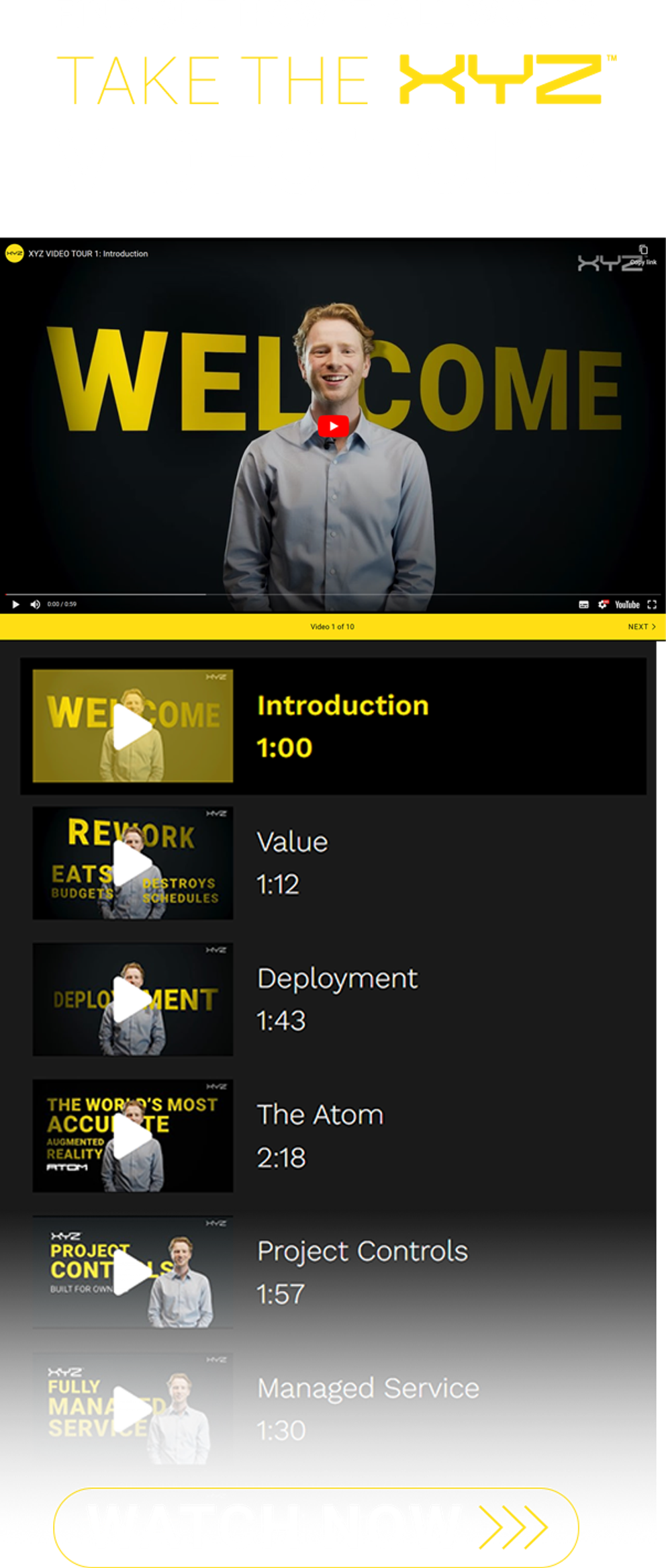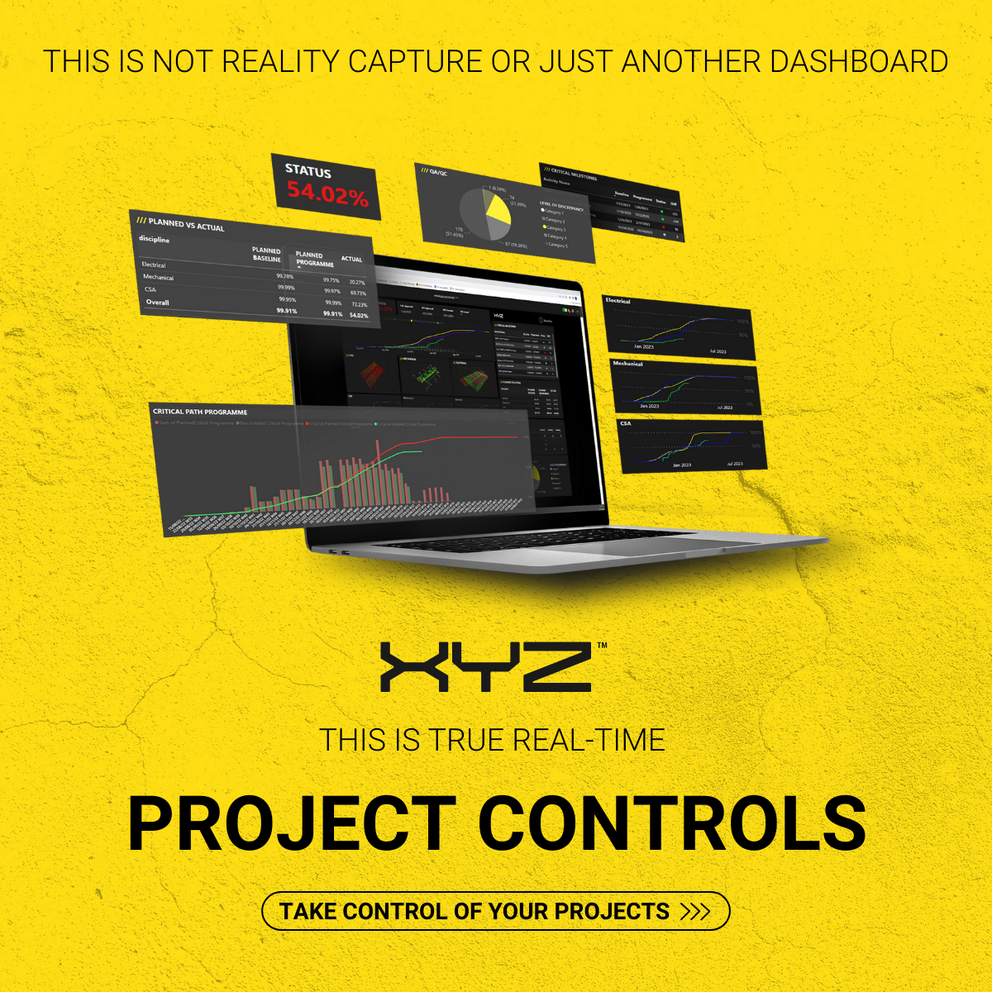-
Services
Services
Find out how we work with our clients and deliver value to construction projects from day one
-
Solutions
Solutions
Discover how all our solutions sync together to deliver construction's most powerful BIM platform to date
-
Built for
Built for
-
Industry
Industry
Understand how we support construction's biggest sectors, and hear from our clients who have experienced the power of XYZ
-
Resources
Resources
Get stuck into all our latest thought leadership, news, reports and industry leading content
-
Company
Company
Dive into what makes XYZ tick, unearth why construction is in our DNA and why we are world leaders in AR solutions

Insights
Why is planning and scheduling so underutilized in construction?

16 October 2024
Planning and scheduling should be the central axis around which every construction project revolves. However, they have become underutilized across the industry, often because technology isn't working in their favor. Plans are frequently difficult to visualize, leading to misinterpretations and delays.
The way plans and schedules are depicted is in dire need of an upgrade. Construction is complex enough, but working from plans that are difficult to interpret only adds to the delays and issues on nearly every site.
The plans they are a-changin'
Construction (especially mission critical construction) is incredibly complex and fast-paced. Every element changes very quickly and no part is static. It is also incredibly interconnected. A delay in one place can cause a ripple effect, impacting entirely different areas, especially when the same subcontractor is responsible for both. This is why it is vital that plans are carried out and schedules are updated when delays occur.
Unfortunately, this rarely ever happens. Delays happen – whether it's due to weather conditions, supply chain issues, labor shortages, or errors and rework. This is no one's fault; they’re just a part of construction.
Current two-dimensional planning and scheduling tools are often challenging to update and typically get revised only on a weekly or monthly basis. This often results in situations where a subcontractor arrives onsite expecting the planned work to be completed, only to find the previous subcontractor still working, and far from finished.
At this point, they will have a decision to make: do I shift my entire team and all my materials, at great expense, to another area (where it is possible the same issue arises), or do I keep everything here and overlap with the previous team, working in the areas that they have completed. If neither of these are an option, the team will have no choice but to wait until their scheduled work becomes available.
This is a common occurrence on construction sites – teams rarely get full access and are required to work on smaller tasks to stay active (let’s not forget that the subcontractors have a financial incentive to stay busy). Delays like this tend to snowball because they push multiple subcontractors behind schedule. Every subsequent area they are scheduled to work on falls behind as well, and without updated plans the same issue can be repeated in those areas, compounding the problem.
Another factor adding to this issue is the fact that plans are often inaccessible to many on-site workers. While the planning software used is not overly complex, construction teams are too busy to down tools and learn how to use or interpret them. Updating them, therefore, becomes a task in itself – a task which they are too busy to undertake, which amplifies the scheduling problems.
It all starts with a plan
The solution to this problem is clear – more accessible plans that are updated frequently. But it’s not that simple. Plans are usually printed out and handed to teams at the start of each week, meaning any changes that happen following that are unaccounted for.
Schedules are typically updated manually, with the General Contractor (GC) conducting site walks and using visual estimates to assess progress and identify areas that are falling behind schedule. Whilst these people have an incredible talent for spotting potential issues, infallible they are not. Once one issue slips past them, the cycle of delays will begin anew.
This has become a problem that must be shouldered by someone else. Relying on the people already onsite to keep plans and schedules in order has been tried, and it has failed.
Fully managed solutions are an option that are picking up steam in the construction tech space, addressing a wide range of challenges. The key fix here is that they do not require upkeep or maintenance from the team, instead providing data to the teams in a succinct and accessible format.
Lifting this weight off project teams frees them from menial tasks, allowing them to focus solely on work that progresses the construction site. Fully managed solutions built to make planning and scheduling easier would do the same, taking on board all the work and providing project teams with valuable real-time information as standard.
Planning in four dimensions
These capabilities could not exist in a vacuum. In my 16 years of experience in construction, I’ve witnessed the challenges caused by poor planning and scheduling first-hand. I’m particularly proud to be part of a company that is directly addressing these issues.
The reason I joined XYZ Reality is because the company was committed to building a solution that addresses these issues. Today, the XYZ platform links the 3D design model with the schedule, creating a 4D planning and scheduling tool that is easy to understand and use. Real-time data on progress and quality captured by our Site Engineers is directly connected to both the schedule and the model, giving you an accurate, up to date view of your project.
This solution rules out scenarios like the one described above. With real-time updates, subcontractors can adjust their plans based on progress made, before even setting foot onsite. It also gives a specified view of what work can and cannot be carried out. Each individual element of the project is mapped alongside its completion status. If an area or package of works is incomplete, but complete in a specific area, the next team can enter knowing exactly what work is available to them.
The level of difference is akin to reading a book versus watching a film. In a book, the words call upon the reader to interpret them. A scene will be described, the background, the characters, their outfits and so on, and it will be up to the reader to paint the picture based on the words. This is traditional planning and scheduling. In a film, everything is visually presented, so there is no need for interpretation - each scene is clear and straightforward. Planning with the XYZ platform is similar: it provides a clear, visual representation of every aspect, eliminating the need for guesswork or interpretation.
Whilst it is up to scholars and critics to debate the value of a book compared to a film, in construction planning it is clear: the latter is superior.
Clarity is crucial in construction, yet the lack of it in planning and scheduling has caused countless problems on projects I've worked on. It's a common issue I hear repeatedly from our partners when they first approach us.
By removing ambiguity and updating progress automatically, our clients have already seen game changing improvements in planning efficiency, not only in the field but also in huddles and daily activity briefings.
The XYZ platform has expedited this process precisely thanks to the clarity and objectivity it brings, enabling everyone to see immediately what tasks are completed and what is still in progress. This efficiency means that teams can stay informed and start their work in minutes.
Driving the industry forward
Planning and scheduling will always be fundamental pillars of the construction industry. They have been neglected by ConTech for far too long in favor of solving the symptoms of underutilizing planning software - the downstream problems that come as a result of an out-of-date schedule and inefficient communication.
XYZ Reality is transforming this by ensuring that plans and schedules remain dynamic and useful throughout the entire construction cycle. With real-time updates linked directly to a 3D model, progress is automatically tracked and adjusted. While each of these features would be a significant step forward, the combination of them truly changes the game.
By tackling the root causes of inefficiency – outdated schedules and unclear communication – we’re empowering construction teams with up-to-date information at every step of the process. This level of integration and real-time precision changes the game, making planning and scheduling more efficient, reducing delays, and improving the overall execution of projects from start to finish.








